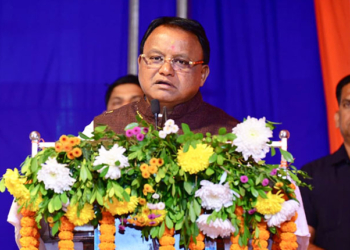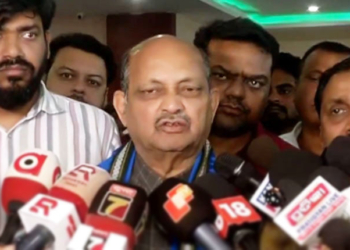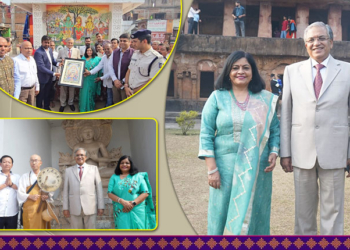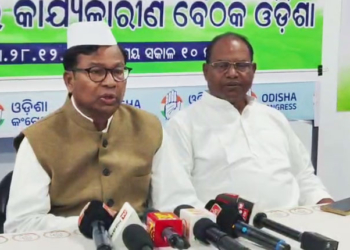Bhubaneswar: Paddy cultivation has been the dominant practice in Odisha for a long time. Rice obtained from paddy remains an essential component of our food platter, but it alone is not sufficient to provide food security. The income generated from paddy cultivation for farmers is often constrained by factors like market fluctuations and narrow profit margins. Diversification into non-paddy crops provide farmers with more lucrative opportunities, thus potentially improving the farmers’ income and overall financial security. It also ensures food security in the state by reducing dependence on a single staple crop.
Additionally, non-paddy crops, like pulses and millets, are generally more drought-resistant, and their cultivation can act as a buffer during water-scarce periods. This diversification strategy enhances the resilience of the agricultural sector against climate-related challenges. By cultivating non-paddy crops during the kharif season, the fallow lands can now be effectively utilized, leading to increased productivity and higher yields throughout the year.
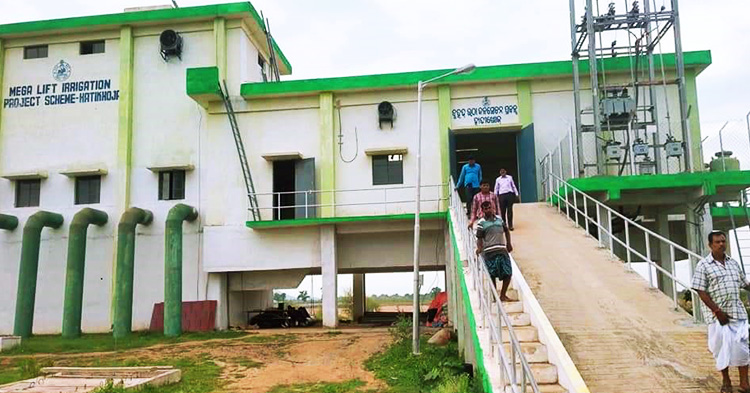
The state of Odisha has been actively working towards transforming its agricultural landscape to ensure food security and sustainable livelihoods for its farmers. Since the year 2011-12, the Odisha government has taken significant strides by setting up mega lift irrigation projects to draw water from rivers and reservoirs.
In a bid to further enhance the agricultural sector, the Department of Agriculture & Farmers Empowerment of the Government of Odisha is implementing Crop Diversification Program in the Mega Lift Irrigation Project areas across 22 districts. These districts include Angul, Bargarh, Balangir, Boudh, Cuttack, Deogarh, Dhenkanal, Gajapati, Ganjam, Jajpur, Jharsuguda, Kalahandi, Kendrapara, Malkangiri, Mayurbhanj, Nabarangpur, Nuapada, Rayagada, Sambalpur, Subarnapur, Sundergarh and Koraput.
The primary objective of this program is to encourage farmers to diversify from traditional paddy cultivation and explore other non-paddy crops during the kharif season. This shift towards non-paddy crops is driven by the aim to align cultivation practices with market demand, improve agricultural productivity, and boost farmers’ incomes.
To achieve these goals, the State Government has laid out a comprehensive work plan:
1. Cultivation of Non-Paddy Crops: The program promotes the cultivation of various non-paddy crops, including pulses, oilseeds, maize, cotton, mandia (finger millet), vegetables, and spices, instead of paddy during the kharif season.
2. Financial Assistance: Farmers who opt for cultivating non-paddy crops receive financial assistance through Direct Benefit Transfer (DBT). This financial aid serves as an incentive to encourage farmers to diversify their crops.
3. Capacity Building: To ensure successful adoption of improved farming techniques and practices, capacity-building programs are conducted to equip farmers with the necessary skills and knowledge.
4. Organic Farming: The program emphasizes the production of organic agricultural products through group-based organizations, promoting sustainable and eco-friendly agricultural practices.
5. Custom Hiring Center: The establishment of Custom Hiring Centers through group-based organizations provides farmers access to various agricultural machinery on a rental basis, reducing the burden of machinery ownership.
6. Promotion of Group-Based Organizations: The program encourages the formation of group-based organizations to foster collaboration in harvesting, primary processing, value-added production, and marketing of agricultural produce.
7. Government Schemes: Various government schemes are leveraged to support small grains and pulses, such as purchasing them for use in programs such as ICDS, MDM, PDS and tribal hostels (ST & SC Welfare Hostels).
8. Support for Start-ups: Advances are offered to agricultural start-ups, enabling them to innovate and market new agricultural products effectively.
9. Awareness Programs: Extensive awareness programs on crop diversification are conducted through advertisements, hoardings, miking, fairs, cooking competitions, and street plays to reach out to a wider audience.
10. Promoting Farmer Producer Organizations (FPOs): The program encourages the formation and strengthening of Farmer Producer Organizations, which empower farmers by providing collective strength in the market.
11. Market Linkages: Efforts are made to establish strong market linkages for the produce, facilitating a smooth transition from the farm to the market.
Financial assistance for cultivating non-paddy crops will be provided to farmers for up to three years during the kharif season. By embracing crop diversification and implementing these measures, the Odisha government envisions a future of robust and sustainable agriculture, enhanced farmer prosperity and food security.





